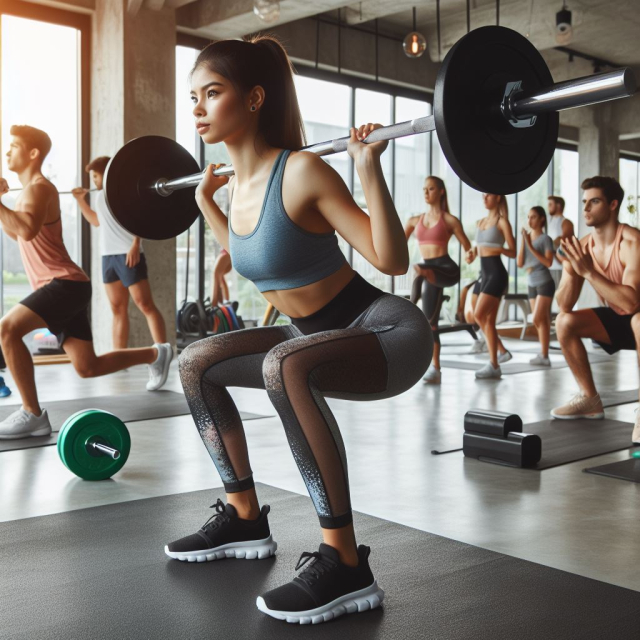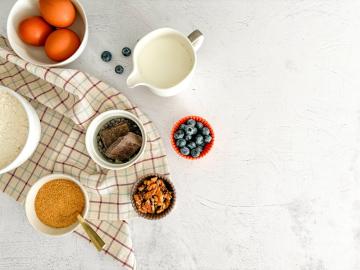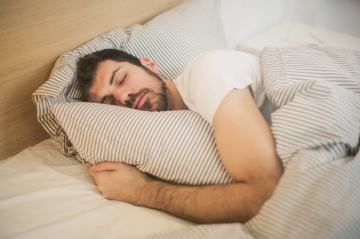The legs are a fundamental part of our body. Not only do they allow us to move and get around, but they also play a crucial role in our overall health and well-being. An exercise routine focused on strengthening and toning the legs not only improves their aesthetic appearance, but also helps prevent injuries, improve posture, and increase physical endurance. In this article, we will explore a variety of tips and recommendations to design an effective leg routine that suits your needs and goals.
Importance of Strengthening the Legs.
Before diving into the specific tips for a leg routine, it is important to understand why it is essential to strengthen this part of the body. The legs are made up of large, powerful muscles that allow us to perform a variety of activities, from walking and running to lifting heavy objects. By strengthening the muscles of the legs, we not only improve their aesthetic appearance, but also promote stability, balance and overall mobility.
Additionally, strong leg muscles can help prevent injuries, especially in the knees and hips, which are vulnerable areas for many people. By strengthening the muscles surrounding these joints, we can reduce the risk of injuries from overuse or sudden movements.
Tips and Recommendations for an Effective Leg Routine.
Variety of Exercises: It is important to include a variety of exercises in your routine to work all the leg muscles in a balanced way. This includes exercises for the quadriceps, hamstrings, glutes, and calf muscles.
Proper Warm-Up: Before starting your leg routine, spend a few minutes doing a proper warm-up. This may include joint mobility exercises, dynamic stretches, and some light cardio to increase body temperature and prepare muscles for exercise.
Correct Technique: Make sure you perform each exercise with the correct technique to avoid injury and maximize benefits. Maintain proper posture, pay attention to the alignment of your knees and hips, and avoid carrying too much weight if it compromises your form.
Gradual Progression: Don't try to do too much too soon. It's important to gradually progress your leg routine, increasing training intensity, weight, or volume over time. This helps prevent injuries and maintain long-term motivation.
Rest and Recovery: Don't underestimate the importance of rest and recovery in your exercise routine. Give your muscles enough time to recover between training sessions and consider including days of active rest or recovery activities such as stretching, yoga or swimming.
Proper Nutrition: A balanced and nutritious diet is essential to support your training goals and promote muscle recovery. Make sure you consume enough protein to repair and build muscle, as well as healthy carbohydrates and fats to provide energy and support bodily functions.
Hydration: Stay well hydrated before, during and after your workout. Dehydration can negatively impact performance and muscle recovery, so make sure you drink enough fluids throughout the day.
Listen to your Body: Finally, listen to your body and respect its signals. If you feel pain or discomfort during an exercise, stop and evaluate whether it is safe to continue. Don't push yourself beyond your limits and remember that progress is a gradual and constant process.
Recommended Exercises to Strengthen the Legs.
Now that we've covered some general tips for an effective leg routine, here are some specific exercises you can incorporate into your workout:
Squats: Squats are one of the most effective exercises for strengthening the quadriceps, glutes and hamstrings. You can perform them with your own body weight or add resistance with free weights or a barbell.
Deadlift: The deadlift is excellent for working the hamstrings, glutes, and lower back. Make sure you maintain good technique and avoid rounding your back during the movement.
Leg Press: The leg press is a machine exercise that focuses on the quadriceps, but also works the glutes and calf muscles. Adjust the seat and platform so that your knees are in line with your ankles.
Lunges: Lunges are great for working your quads, glutes, and hamstrings, as well as improving balance and stability. You can perform forward, backward or lateral strides to vary the stimulus.
Heel Raises: Heel raises are ideal for strengthening the calf muscles and improving ankle stability. You can do them on a specific heel raise machine or simply using your own body weight.
Step-Ups: Step-ups are a functional exercise that works the quadriceps, glutes, and core-stabilizing muscles. You can do them using a bench, a box, or even the stairs in your house.
Burpees: Burpees are a full-body exercise that includes a squat, a push-up, a jump, and a return to a standing position. They are excellent for increasing heart rate and improving muscle strength and endurance throughout the body, including the legs.
Farmer's Walks: Farmer's walks are a simple but effective exercise that works the quadriceps, glutes, and calf muscles, as well as improves cardiovascular endurance. You can do them by holding weights in each hand and walking a certain distance.
Designing your Leg Routine
When designing your own leg routine, it is important to take into account your individual goals, fitness level, and any specific limitations or restrictions. Be sure to include a variety of exercises that work all muscle groups in your legs and challenge you progressively over time.
Here is an example leg routine you can follow:
Day 1:
- Squats: 3 sets x 10 repetitions
- Deadlift: 3 sets x 10 repetitions
- Heel Raises: 3 sets x 15 repetitions
- Lunges: 3 sets x 12 repetitions (each leg)
- Step-Ups: 3 sets x 10 repetitions (each leg)
- Burpees: 3 sets x 8 repetitions
Day 2 and 3: Rest or Active Recovery. Take these days to work another part of the body.
Day 4:
- Leg Press: 3 sets x 12 repetitions
- Farmer's Walks: 3 sets x 1 minute (with weights)
- Squats: 4 sets x 8 repetitions (with additional weight)
- Deadlift: 4 sets x 8 repetitions
- Burpees: 3 sets x 10 repetitions
Day 5 and 6: Rest or Active Recovery. Take these days to work another part of the body.
Day 7: You can take this day to give yourself a well-deserved rest.
Remember to adapt the intensity, volume and training load according to your fitness level and individual goals. Listen to your body and adjust your routine as necessary to achieve the best results.
An effective leg routine is essential for maintaining long-term health and physical well-being. By incorporating a variety of exercises that work all leg muscle groups, along with a balanced diet and sufficient rest and recovery, you can strengthen your legs, improve your athletic performance, and prevent injuries. Follow these tips and recommendations, design a routine that suits your needs and goals, and you will be on your way to achieving stronger and more toned legs in no time.






